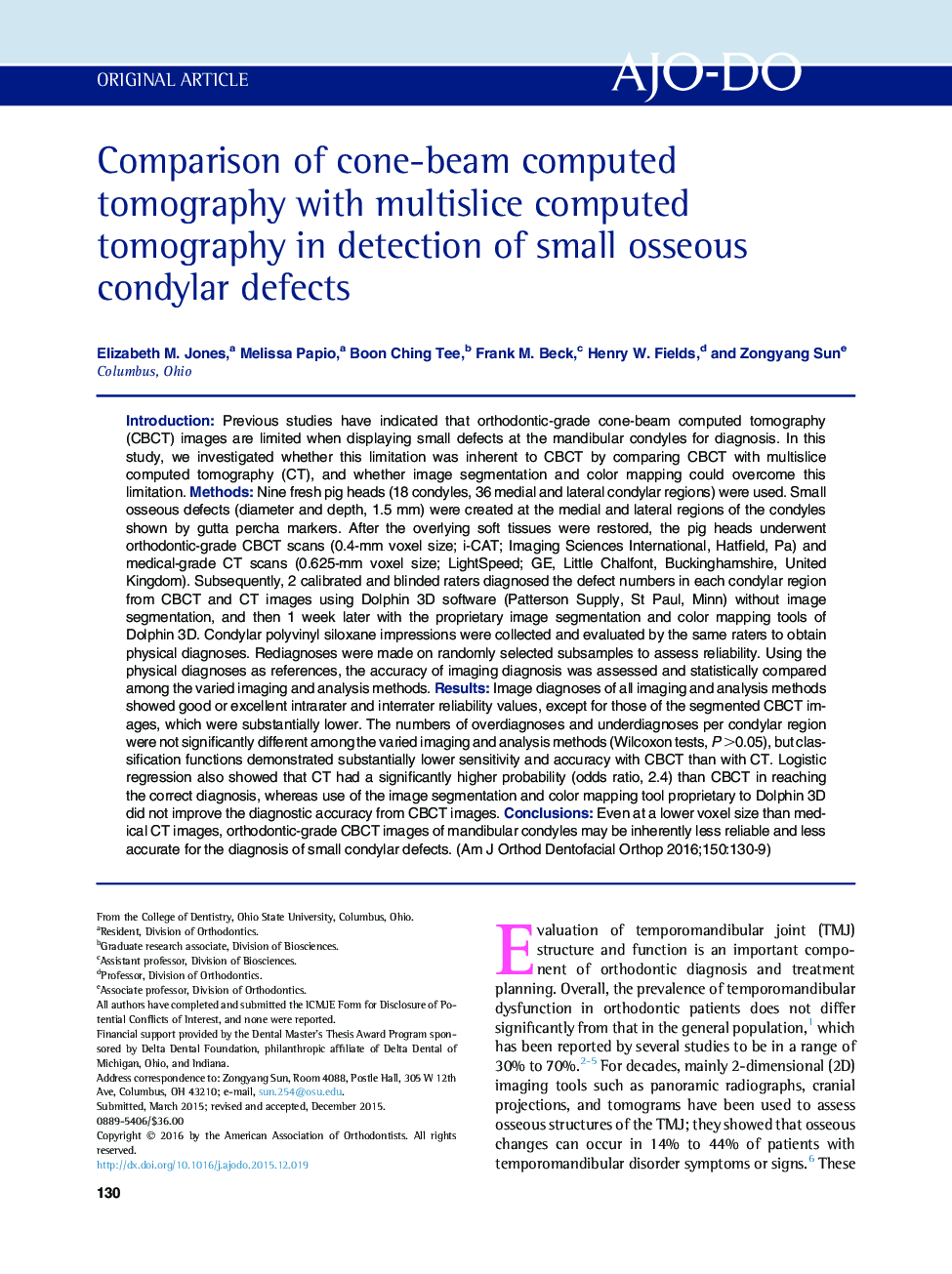| Article ID | Journal | Published Year | Pages | File Type |
|---|---|---|---|---|
| 3115381 | American Journal of Orthodontics and Dentofacial Orthopedics | 2016 | 10 Pages |
•Large voxel size cone-beam computed tomography (CBCT) images are inferior to computed tomography images for diagnosing small condylar defects.•Segmentation and color mapping of CBCT images did not improve diagnostic accuracy.•Orthodontic-grade CBCT images are inadequate for screening small condylar defects.
IntroductionPrevious studies have indicated that orthodontic-grade cone-beam computed tomography (CBCT) images are limited when displaying small defects at the mandibular condyles for diagnosis. In this study, we investigated whether this limitation was inherent to CBCT by comparing CBCT with multislice computed tomography (CT), and whether image segmentation and color mapping could overcome this limitation.MethodsNine fresh pig heads (18 condyles, 36 medial and lateral condylar regions) were used. Small osseous defects (diameter and depth, 1.5 mm) were created at the medial and lateral regions of the condyles shown by gutta percha markers. After the overlying soft tissues were restored, the pig heads underwent orthodontic-grade CBCT scans (0.4-mm voxel size; i-CAT; Imaging Sciences International, Hatfield, Pa) and medical-grade CT scans (0.625-mm voxel size; LightSpeed; GE, Little Chalfont, Buckinghamshire, United Kingdom). Subsequently, 2 calibrated and blinded raters diagnosed the defect numbers in each condylar region from CBCT and CT images using Dolphin 3D software (Patterson Supply, St Paul, Minn) without image segmentation, and then 1 week later with the proprietary image segmentation and color mapping tools of Dolphin 3D. Condylar polyvinyl siloxane impressions were collected and evaluated by the same raters to obtain physical diagnoses. Rediagnoses were made on randomly selected subsamples to assess reliability. Using the physical diagnoses as references, the accuracy of imaging diagnosis was assessed and statistically compared among the varied imaging and analysis methods.ResultsImage diagnoses of all imaging and analysis methods showed good or excellent intrarater and interrater reliability values, except for those of the segmented CBCT images, which were substantially lower. The numbers of overdiagnoses and underdiagnoses per condylar region were not significantly different among the varied imaging and analysis methods (Wilcoxon tests, P >0.05), but classification functions demonstrated substantially lower sensitivity and accuracy with CBCT than with CT. Logistic regression also showed that CT had a significantly higher probability (odds ratio, 2.4) than CBCT in reaching the correct diagnosis, whereas use of the image segmentation and color mapping tool proprietary to Dolphin 3D did not improve the diagnostic accuracy from CBCT images.ConclusionsEven at a lower voxel size than medical CT images, orthodontic-grade CBCT images of mandibular condyles may be inherently less reliable and less accurate for the diagnosis of small condylar defects.
